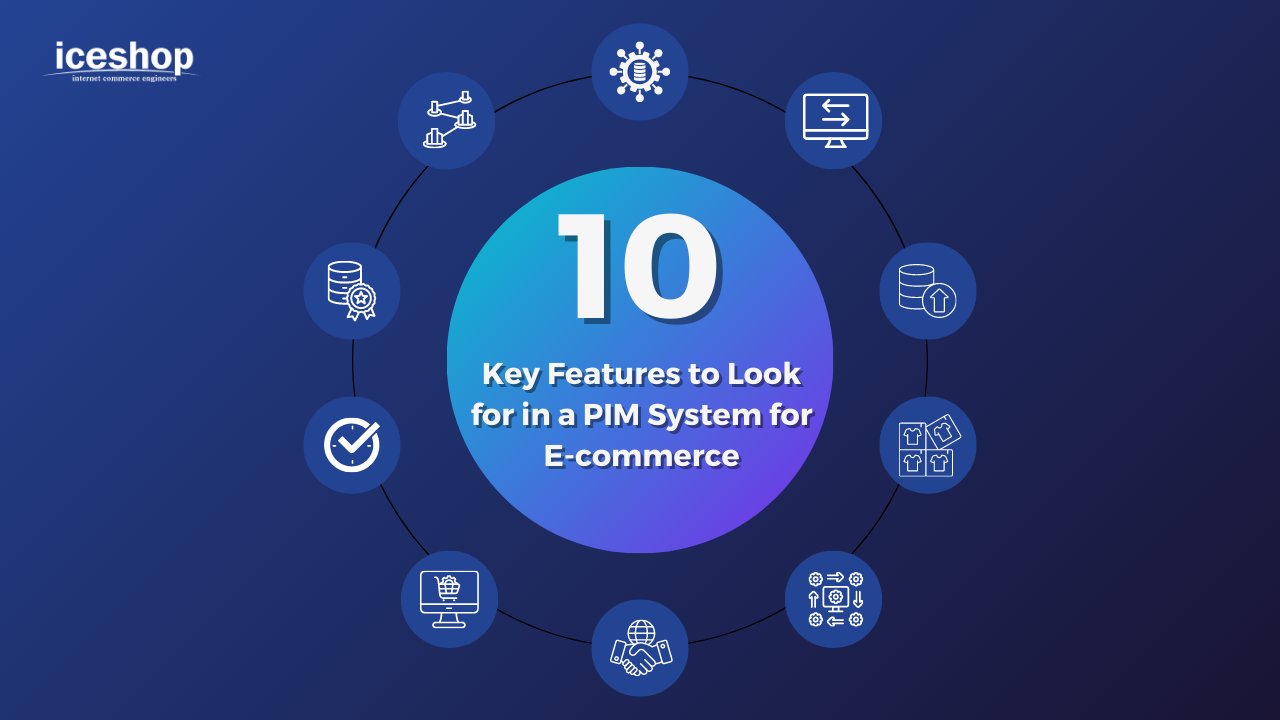In the fast-paced world of e-commerce, managing product data efficiently is crucial for success. A Product Information Management (PIM) system is a powerful tool that can streamline and centralize product information, enabling businesses to deliver accurate and consistent data to their customers across various channels, making the job of an eCommerce manager simpler and smoother. However, not all PIM systems are created equal. To make an informed decision and choose the right PIM system for your e-commerce needs, consider these ten key features:
Centralized Product Database:
Look for a PIM system that offers a centralized database where all product information, including attributes, images, descriptions, and specifications, can be stored in one place. This centralized approach ensures data consistency and reduces the risk of errors caused by duplicate or conflicting information.
Data Import and Export Capabilities:
A robust PIM system should support easy data import and export in various formats, such as CSV, XML, or JSON. This feature simplifies the process of transferring product data between your PIM system and other business applications, such as your e-commerce platform or ERP system.
Data Enrichment Tools:
The ability to enrich product data with additional attributes, metadata, and multimedia elements can significantly enhance the quality of your product listings. Look for a PIM system that offers intuitive data enrichment tools to make this process seamless.
Product Variant Management:
For businesses that offer products with multiple variants (e.g., size, color, or material), a robust PIM system should provide efficient variant management. It should enable easy creation and maintenance of product families, simplifying the management of diverse product options.
Workflow and Collaboration:
Consider a PIM system with built-in workflow and collaboration features. This allows multiple team members to collaborate on data management tasks, ensuring that everyone involved is working on the most up-to-date and accurate information.
Localization and Globalization Support:
If your e-commerce business operates in multiple regions or countries, choose a PIM system that supports localization and globalization. This means the system should allow for translation and adaptation of product data to cater to different languages, currencies, and regional requirements.
Integration with E-commerce Platforms:
Select a PIM system that seamlessly integrates with your existing e-commerce platform. A strong integration will facilitate smooth data synchronization, ensuring that your product information is up-to-date and consistent across all customer touchpoints.
Real-time Data Synchronization:
Ensure that the PIM system you choose can handle real-time data synchronization. This feature is critical for businesses that frequently update product information, such as stock availability, pricing, or product descriptions.
Data Quality and Governance:
Data accuracy and integrity are essential for successful e-commerce operations. Look for a PIM system that includes data quality and governance features. For example, data validation, data completeness checks, and data versioning, to maintain the highest standards of data accuracy.
Scalability and Performance:
As your e-commerce business grows, so will your product data volume. Ensure that the PIM system you choose can handle increased data loads and offers excellent performance. This in turn, will allow you to scale without compromising data management efficiency.
In Conclusion
Choosing the right PIM system is a critical decision for any e-commerce business. A PIM solution goes beyond collecting product data; it optimizes that data, cleans it, and publishes it uniformly across all eCommerce channels. Moreover, PIM also helps manage product attributes and connect not only with teammates but also with channel partners, all in one place, and provide them the access level they need.
By considering these ten key features mentioned above, an eCommerce manager can empower their business with the right tools to efficiently manage product information, enhance customer experiences, and drive e-commerce success.



